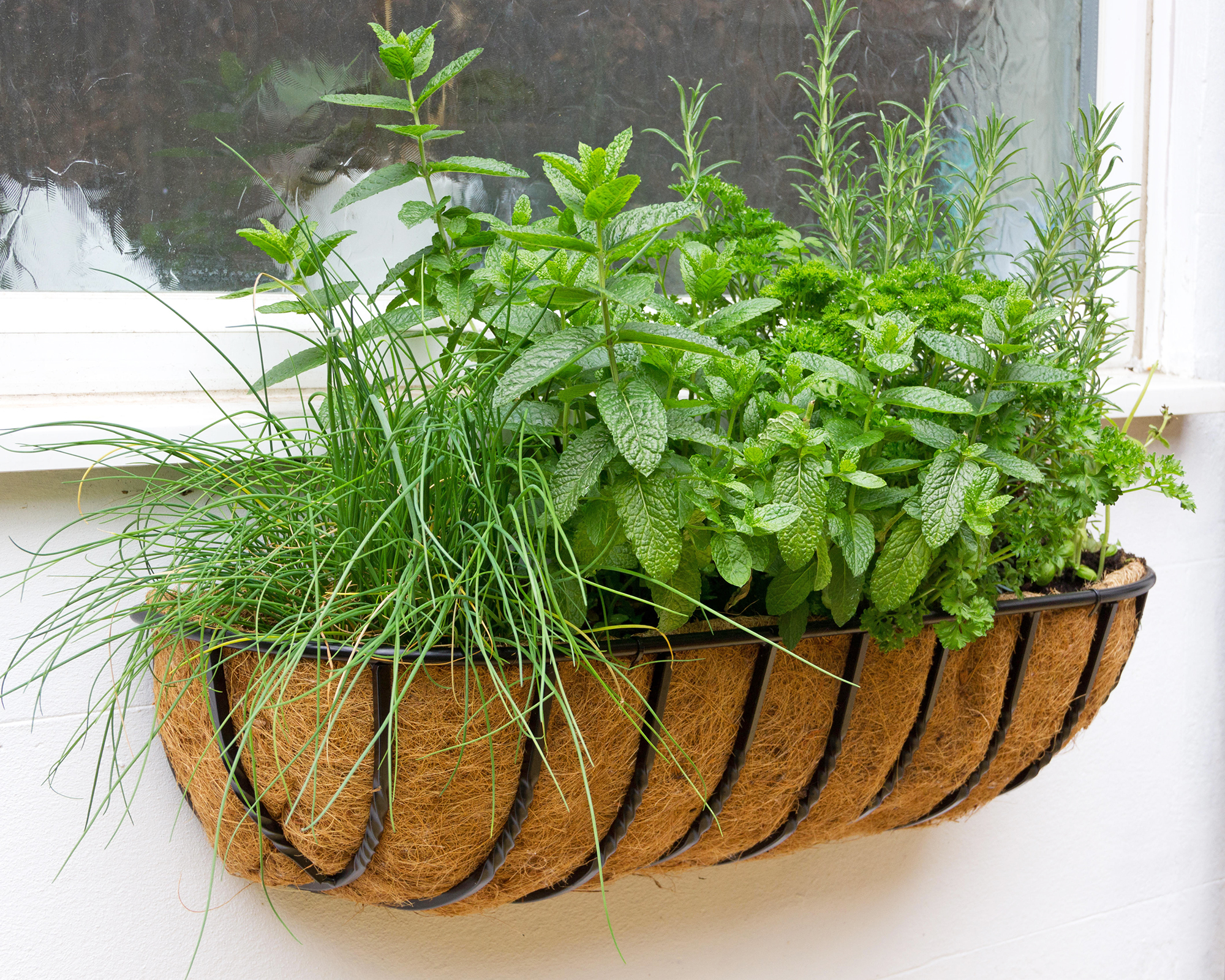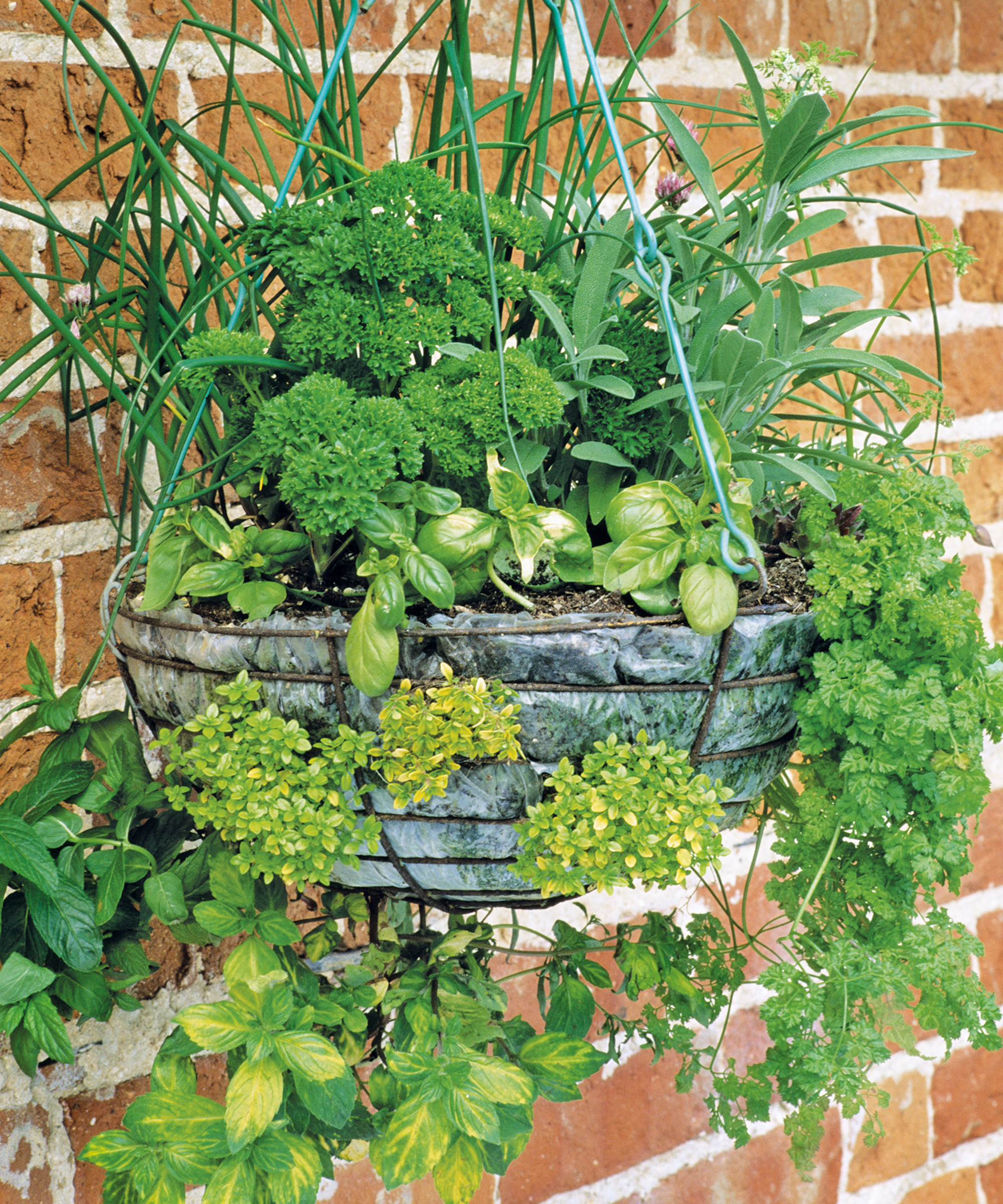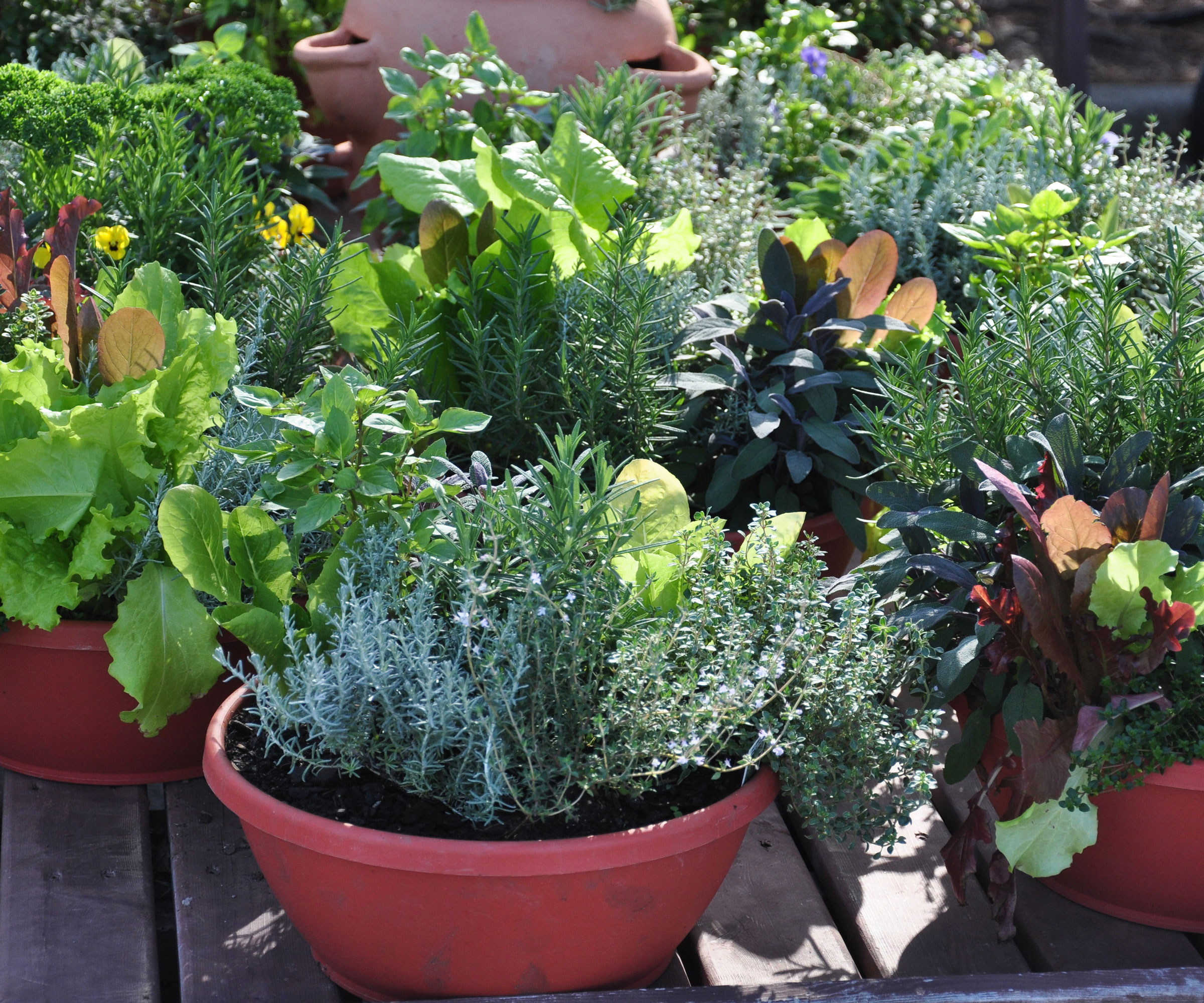What Herbs Can Be Planted Together In Containers? Delicious Combinations For Fresh Flavor Anywhere
Wondering what herbs can be planted together in pots for your porch or patio? Our experts share their favorite herb mixes for a flavor-packed container garden.

Amy Draiss
Almost everyone has space for a potted herb or two, but if you want to make the most of your space you may be wondering what herbs can be planted together in one pot? Growing herbs in containers together not only makes a planter look lush, but it's also a great way to maximize flavor in a limited space.
Determining what herbs to plant together takes a little bit of know-how. But once you understand the why behind herb planting combinations, it's easy to create beautiful and delicious planters. Herbs that grow well together generally have similar growing requirements and often taste great in recipes together.
Let's dig into how to choose the best herbs to grow together and take a look at some tasty combinations to try in your garden.

Keep herbs perfectly hydrated with the EZ Self-Watering Herb Planter Box with Trellis from Vego Garden. Get it now in the Gardening Know How Shop!
What Herbs Can Be Planted Together?
Herbs are fairly resilient and can be grown individually in containers indoors, out in the garden, or together in a container indoors or out. There are so many creative herb garden planter ideas you can try like growing herbs in a window box, an herb hanging basket, or even a strawberry planter.
The most important consideration, though, when growing herbs together in a pot is to group herbs that have similar growing requirements together. This means herbs planted together should have similar soil, water, light, and fertilizer needs.
Soil and light are easy since all herbs require well-draining soil and need four to six hours of sunlight or per day. If you only have limited light, your best options are parsley, chives and mint.

Water requirements is where things get a little dicey, since not all herbs require the same amount of water. Many are hardy and drought tolerant but not all of them. Purchase a well-draining potting mix or create a DIY peat-free potting mix for better drainage and more sustainable planting.
Sign up for the Gardening Know How newsletter today and receive a free copy of our e-book "How to Grow Delicious Tomatoes".
Choose like-minded herb groupings such as basil, tarragon and oregano, or lavender, rosemary and thyme—the former being tender herbs that require more irrigation and the latter are more drought tolerant. You can also plant perennial herbs in pots together for a tasty combination that will last for years to come.
As far as fertilization goes, supplemental nutrients are not commonly needed. However a bit of diluted fertilizer, especially for potted herbs, is beneficial.

Best Herbs to Grow Together
We've already covered a couple of herb combinations above, but here are some of my favorite herbs to plant together in one pot.
Lemon verbena, dill, and cilantro make a lovely combination and have the benefit of attracting beneficial insects that prey on pests.
Parsley, sage and chives do well together but parsley will pair nicely with any number of herbs such as basil, lavender, lemon balm, rosemary and thyme.
You can group herbs in combination to suit a repertoire such as Italian cuisine wherein you plant basil, oregano, parsley, rosemary, sage and thyme together.
You may want to group aromatic herbs such as chamomile, hyssop, lavender, lemon verbena, and pineapple sage.
The one herb that shouldn’t be mixed with other varieties is mint. Mint has an aggressive habit and will likely take over the entire herb garden combination. If you group different members of the mint family together be aware that one will likely out-compete the others.

Problems Growing Herbs Together
The biggest problems with growing herbs together in a container is misgauging the container size. Many herbs can get quite large so allow them the room to grow and don’t crowd the pot with too many plants.
Always select a container with good drainage and use potting soil that is well-draining. Even though herbs are notoriously drought tolerant, those grown in containers will need more irrigation than those grown in the garden proper.
How to Plant Herbs Together in One Pot
The first thing you need for a combination herb planter is a container that’s large enough to accommodate maturing roots. It can be made of anything as long as it is sufficiently large enough and has drainage holes.
Select your herb combinations. They can be mixed or, for fun, tweaked with an unusual cultivar sporting colorful foliage or unique textures. Mix in elegant, edible flowers like calendula, dianthus, nasturtium, pansies or violas that not only beautify but also enhance dishes and cocktails.
Consider grouping cold-tolerant herbs such as lavender, parsley, rosemary, sage and thyme together which will continue to produce well into the fall.
Fill the container partially full with a good quality, well-draining potting soil. Remove the herbs from their pots and loosen their roots.

Follow the planting theory of thriller, filler, and spiller for a beautiful display in your herb pots. Starting with the tall plants at the rear of the container, plant from tallest to shortest moving forward. Pack the soil around the roots to eliminate any air pockets.
Be sure to leave a bit of room at the top of the container to allow for ease of watering. You can top dress with mulch to aid in water retention or add a drip system to make watering a breeze; both are extremely helpful when dealing with large containers.
Check on the herb container daily to determine if it needs water or if plants need to be pinched back. Pinching herbs back helps them become full and bushy rather than leggy and rangy.
Although herbs rarely need it, a supplemental diluted fertilizer is helpful for those grown in containers. Feed container-grown herbs with a water-soluble organic fertilizer like fish emulsion or liquid kelp or with a slow-release, granular fertilizer.
This article features products available from third party vendors on the Gardening Know How Shop. Keep in mind that our plant inventory is limited—so if you’re thinking of purchasing, don’t wait!

Amy Grant has been gardening for 30 years and writing for 15. A professional chef and caterer, Amy's area of expertise is culinary gardening.
- Amy DraissDigital Community Manager